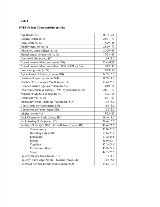Hypermotoric Versus Dialeptic Semiology in Patients With Psychogenic Non-Epileptic Seizures (PNES): Inherently Different or Two Sides of the Same Coin?
Abstract number :
1.197
Submission category :
4. Clinical Epilepsy / 4A. Classification and Syndromes
Year :
2018
Submission ID :
500397
Source :
www.aesnet.org
Presentation date :
12/1/2018 6:00:00 PM
Published date :
Nov 5, 2018, 18:00 PM
Authors :
Matthew L. Morton, Emory University School of Medicine; Diane Teagarden, Emory Healthcare; Olivia Groover, Emory Unversity School of Medicine; and Ioannis Karakis, Emory University School of Medicine
Rationale: Patients with psychogenic non-epileptic seizures (PNES) can be semiologically dichotomized into those with hypermotoric and those with dialeptic events. Whether these two populations differ or represent two sides of the same coin remains unclear. The objective of this study is to compare patients with hypermotoric with those with dialeptic PNES to evaluate for differences in sociodemographic and disease characteristics, health care use/access, knowledge/attitudes towards epilepsy, and PNES-related outcomes. Methods: Patients monitored at the Epilepsy Monitoring Unit (EMU) completed surveys about the aforementioned outcomes of interest. They were classified into hypermotoric vs dialeptic based on their recorded events. Comparison of the two populations was performed using student’s t-test for continuous variables and Fischer exact test for categorical variables. Results: 31 patients have been recruited thus far (ongoing enrollment). The majority were single, unemployed women in their mid-thirties with some college education. Approximately half were Caucasian and 41% were Medicare/Medicaid insured or uninsured. The majority have had spells for four years averaging four seizures per month and were on two or more antiepileptic drugs (AEDs). Patients with hypermotoric events were more likely to visit the emergency department (ED) compared to those with dialeptic events (p=0.04). Otherwise, no differences were seen between the two semiologically diverse groups of patients in their demographic (age, gender, race, employment, income, marital and educational status) and disease (age of onset, duration, events frequency, number of prescribed AEDs prior to diagnosis, levels of depression and anxiety) characteristics, nor in their knowledge/attitudes towards their disease and related outcomes (injuries, quality of life, stigma, epilepsy knowledge and medication side effects). Conclusions: Beyond increased utilization of emergency services in patients with hypermotoric events, semiological dichotomy of patients with hypermotoric vs dialeptic PNES does not reveal significant differences in their pathophysiology and prognosis. Funding: None

.tmb-.png?Culture=en&sfvrsn=dbb75619_0)